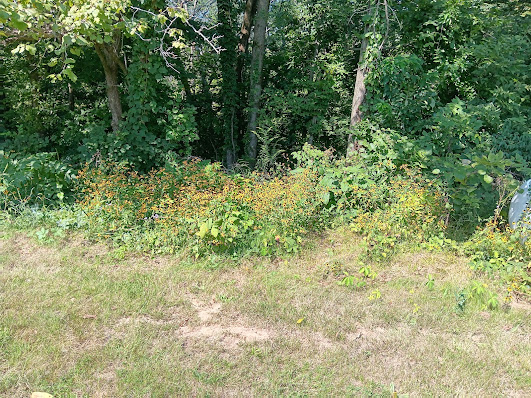Backyard Conservation || Implementing Transition Zones in your Yard
As warmer weather is approaching and you are itching to get outside and start working on the ideas you have for this growing season I am curious if you have considered transition zones for your yard. Harvard defines a transition zone as, " a domain where the state within an Earth system component changes gradually." I have no transition zone here where I am currently at, to give a visual it is yard with no trees and a stark boarder where it meets the forested area. That is called an edge and some animals are...okay with an edge, like deer, but they don't prefer it. If you want to see more animals in your yard and even encourage more pollinators and you have an edge type habitat in your yard, this blog will help you get inspired on what can be done and have a more successful yard.
1. Planting Native is Number One!
2. Work in layers
3. Bushes
4. Grasses
5. Ground cover
Ground cover is a fun yard implement to design. Many ground cover plants are flowering and what this layer does is it erases the hard stark edge of mowed lawn and the rest of the transition zone- essentially it is a blur on the edge. Examples of native Michigan ground cover plants are: wild strawberry, creeping phlox, wild geranium, Canada anemone, and bearberry. Ground cover is just low growing plants and some people opt to plant them instead of mulching so as to crowd out garden weeds.
6. Minimal yard clean up is okay
Lastly, don't stress too much about yard clean up. Those leaves that you left in the yard since fall can provide great nutrients to the soil, just mow over them to make them smaller and less noticeable. The woodpile you may have in your yard probably has served as a winter home to some mice or rabbits, try not to be so quick to move it all because they will likely move out when the weather gets warmer and there is more food for them to forage elsewhere. If you want to attract wildlife to your yard don't make it an unwelcome place for wildlife to come to. Occasional mowing, planting and landscaping won't deter them- it's really all about what you are doing to the yard and if it is suitable habitat when you get all through.







.png)
Comments
Post a Comment